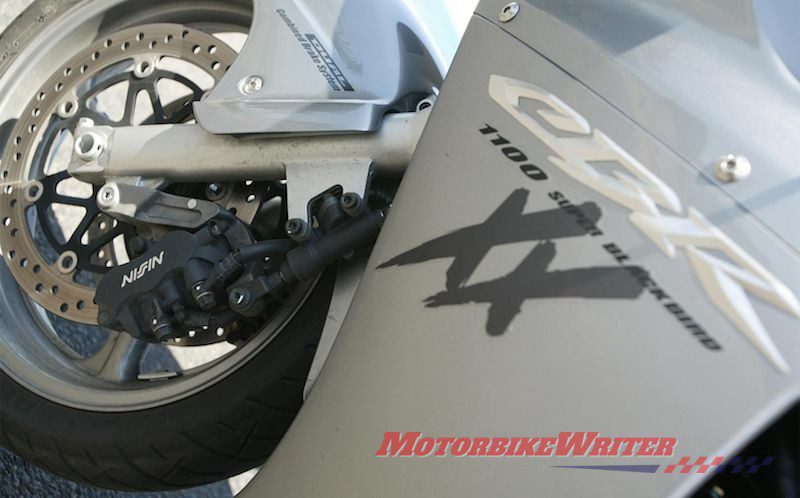Patent drawings seem to suggest Honda may be reviving its high-speed Blackbird sports bike with eight aerodynamic winglets.
In September, patent drawings of winglets that automatically deployed above a certain speed were accompanied by drawings of the Africa Twin and Fireblade.
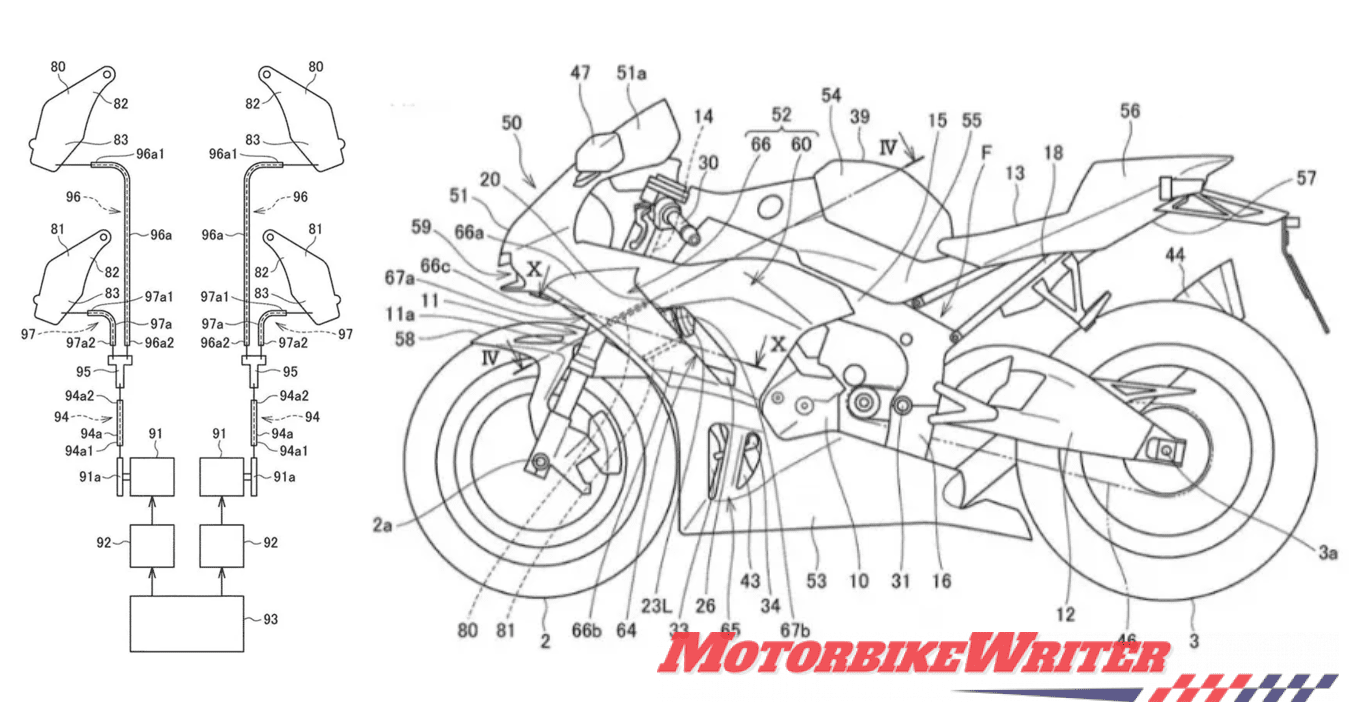
When both were unveiled at the EICMA motorcycle show in Milan last month, neither had these wings.
Blackbird drawing
Now the new drawing looks suspiciously like the CBR1100XX Super Blackbird.
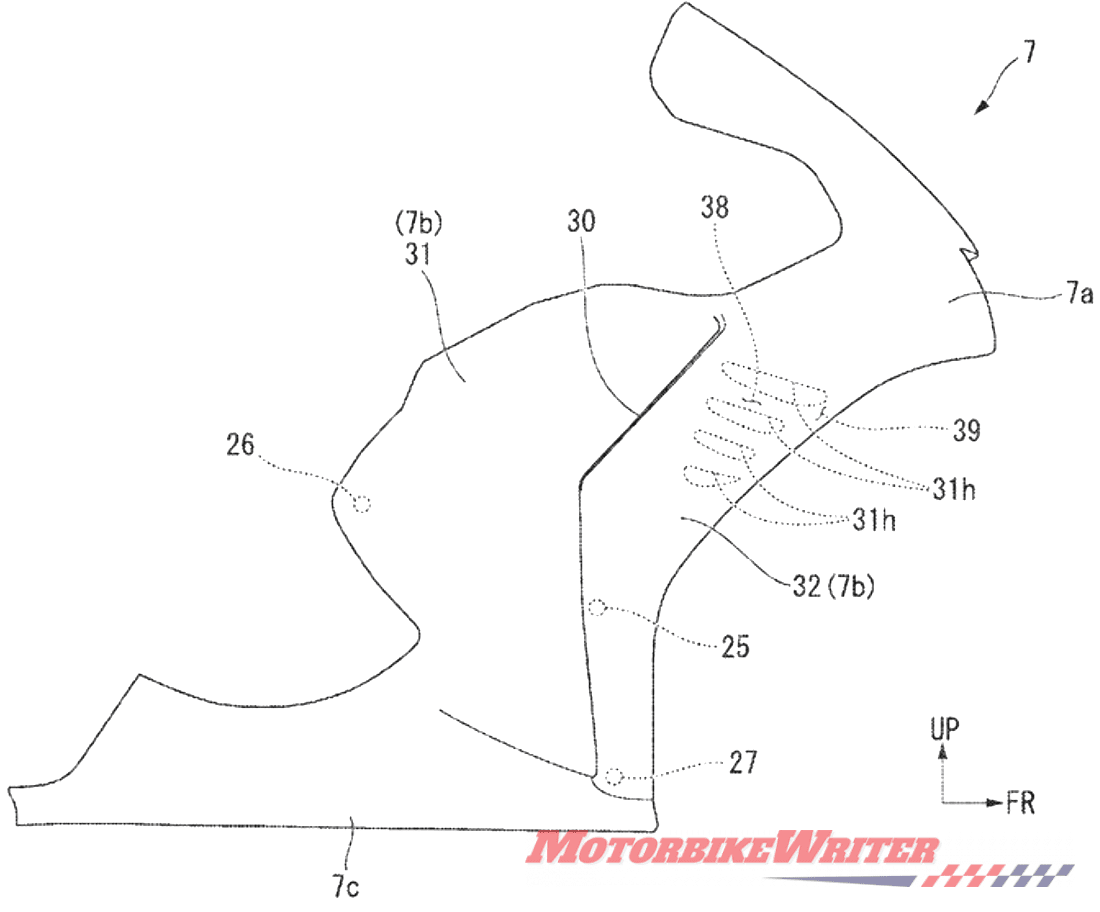
It includes eight winglets which seems to indicate ultra-high speeds.
That would fit in with the ethos of the Blackbird as once the world’s fastest motorcycle.
Then along came the Suzuki Hayabusa named after the peregrine falcon, the world’s fastest bird, and natural predator of the blackbird!
Then manufacturers agreed to limit speeds to 299km/h after European officials threatened to ban high-speed motorcycles in the 1990s.
Patent blitz
Don’t get too excited about Honda returning the Blackbird, though.
This new Blackbird patent joins the following from Honda over the recent past:
- Bikes that respond to your emotions by adjusting throttle and brakes and suspension;
- Electric motorcycles with an alarm to warn pedestrians unaware of the approaching quiet vehicle
- A head-display windscreen that is also touch sensitive.
- Suspension that works via artificial intelligence to predict and adjust damping.
- Active aero where winglets deploy above a certain speed;
- Direct injection;
- A bike with a variable riding position that converts from a sports bike with a crouched riding position to a street bike with an upright position;
- A small-capacity bike with non-ventilated drum brakes;
- A helmet that integrates with the bike and monitors for of an impending rear-ender;
- A helmet that recognises your face when you put your helmet on and acts as a remote key fob to switch on your motorcycle;
- A rider air-conditioner;
- A “climate seat” that blows hot or cool air;
- A leaning trike;
- A retro design based on the CMX 500 Rebel; and
- A hydrogen-powered motorcycle.
Hayabusa patents
Meanwhile, Suzuki Motorcycles has filed its second patent for a major upgrade to its Hayabusa speed demon with semi-automatic transmission.
The ageing Hayabusa has only had two major upgrades in its 17-year history as the world’s fastest production motorcycles of the last century.
While many are expecting turbo or supercharger technology, the two patents so far have been for a semi-automatic transmission.
The first patent in February 2018 details how actuators will be used to control clutch engagement and the shifting of gears.
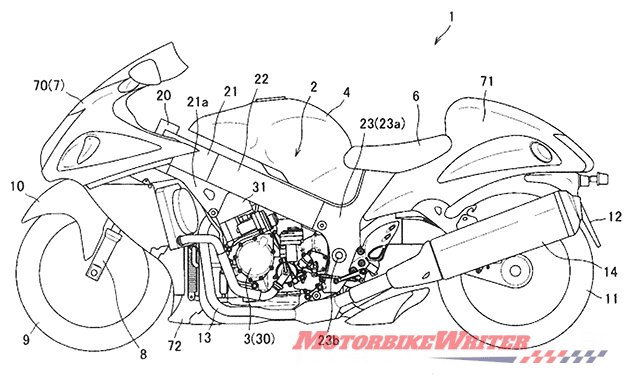
So it’s not totally automatic as riders would still need to change gears but without the need to use a clutch.
While the patent application used a drawing of a Hayabusa, it was not necessarily meant for that bike.
Second patent
However, the second patent describes the gear position sensor, confirming that it is destined for the Hayabusa.
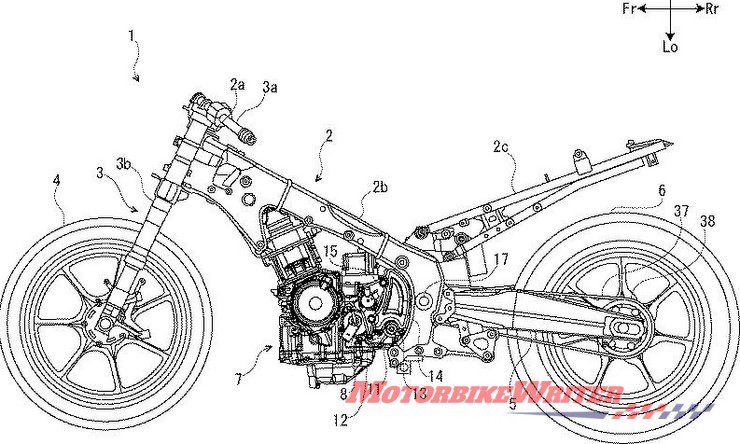
The rest of the drawings show the bike much as it is now which means it could probably be powered by the same 1340cc in-line four-cylinder engine with 148kW of power.
However, there is talk of a 1400cc version and possibly forced induction.
Suzuki president Toshihiro Suzuki has confirmed that Suzuki engineers are working on the new bike, but has not said when it would be due.
He says it will follow the same style, but gain several electronic riding aids.
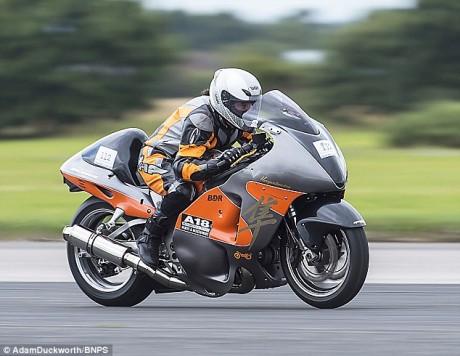
There is not much they can do with the styling as the bike was designed to be aerodynamically stable at high speeds.
It was apparently designed on paper by aerodynamic experts, but not tested in a wind tunnel until several years later when it was confirmed the aero theories actually worked.
So when it was updated in 2008 and 2017, there was no need to change the shape.


